Genre: Action/RPG Developer: Treasure Publisher: Sega of America Players: 1 Released: 1995
Vying with McDonald’s Treasureland Adventure for the dubious award of Treasure’s Black Sheep is Light Crusader. But unlike its competition, Light Crusader isn’t a merchandising tie-in produced by a fledgling company trying to get their foot in the door. It’s a viable commercial effort by a company on its way to big things; a game developed by choice and concurrently with three other projects, each of which would go on to achieve legendary status. Yet you’ll find far more people who dislike it than those who enjoy it. Why is it so loathed? First, let’s identify what we’re dealing with.
The game is technically an action RPG, with a heavy emphasis on puzzles. A first glance brings Will Harvey’s The Immortal to mind, courtesy of an isometric viewpoint and familiar morbid touches like being able to decapitate goblins. A closer investigation, however, turns up a lot of dissimilarities, the most pronounced of which is the tone of the game. Light Crusader is a melding of romantic, gothic-style architecture and the imagery of an oriental goddess cult. This atmosphere is pervasive, but thankfully it doesn’t come off as heavy-handed. Treasure executes admirably, resulting in an experience that evokes visions of candle-lit mystery and wisping trails of incense. (For that reason alone, I’d like to see this game get a next-gen remake, with modern graphics and sound technology.)
Backing up this atmosphere is an array of technically advanced graphical effects. I can’t think of a better-looking isometric game for the system, with the sole exception of Core’s Skeleton Krew. The bosses are massive and put the fluidity of vector graphics to good use; magic attacks are realized with snazzy particle effect. None of this should be a surprise to you; it’s long been known that your eyes are in good hands when Treasure is at the wheel. The only downside is some awkward animation, especially for the main character. (He walks like a duck, I swear.)
By now some of you are assuredly waiting for the other shoe to drop. All of this sounds just too good for what may be Treasure’s outcast, right? Wait a second, please, because first I’ve got to talk about the gameplay. Although I said earlier that Light Crusader really lays the puzzles down thick, in general the mechanics hold true to that greatest of genres, the classic action RPG. Jump, fight, jump, get an item, talk to a villager, push some blocks around, jump, cast some magic, use a healing item, jump, etc… this is time-proven stuff. Landstalker, Crusader of Centy, and Beyond Oasis do the same thing to a lesser extent, and each of those games have healthy fan followings and get good reviews. Light Crusader does the same thing, albeit with far more puzzles. Good news, though: all those puzzles are well designed, especially the ones involving explosives and pressure-sensitive tiles. Frustrating? Sort of but quite rewarding as well.
Unfortunately, the designers didn’t seem to consider the logistics of their dungeon layouts. Although things are getting better nowadays, in 1994 there wasn’t much concern over why there were all these intricate traps and obstacles scattered around a dungeon. (Or why Robotnik would leave rings for Sonic all over his contraptions.) Consequently, most of the game consists of running from room to room, slashing up a few foes, and solving obtuse puzzles. Suspension of disbelief is a nearly impossible task in this case. The game never lets you forget that you’re playing just that: a game.
One more thing, about the combat. The swordplay itself is simplistic at best; on paper you have three different attacks, but in practice it’s a choice between jump and jumping slash. That wouldn’t be horribly exciting by itself. But come on, did you really think a Treasure game would settle for such a skeletal fighting system? Bolstering the combat is a magic system that takes what was started in Gunstar Heroes to the next level. Whereas in Gunstar Heroes you could only mix two different types of weapons at a time from a possible four, Light Crusader does the logical thing and allows players to construct magical attacks from any combination of two, three, or all four magic types. That’s a high degree of flexibility, and it certainly opens the door to a lot of different tactics and styles of combat.
All right, the time has come to address the main issue here: why do most people dislike it? It’s got great atmosphere, graphics, sound, and solid gameplay to boot. Well, the reason it’s looked down upon is because it was designed by Treasure. That’s basically it. People have come to expect unique, high-octane action experiences from Treasure, and Light Crusader is neither. It’s a relatively slow-paced adventure game and doesn’t do anything truly original. (The magic system was a nice try, though.) It’s hard to draw any conclusion other than that the game would have been much more warmly accepted if it had been developed by someone else. But coming from Treasure, with all the expectations that it involves, Light Crusader is an understandable disappointment for many. It’s just not radical enough.
That said, it’s still my recommendation that you pick this one up. It’s one of those games that you’ll never be able to tell whether you like or not until you try. Considering how cheap it is, that shouldn’t be too much of a risky venture. At worst you’ll waste five bucks on a video game. Odds are that at the very least you’ll find it’s a good way to kill time between greater conquests. And hey, you might just love it.
SCORE: 7 out of 10

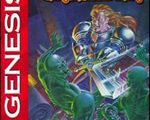
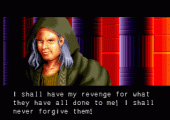
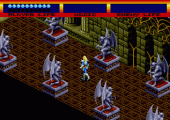
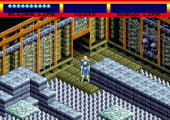
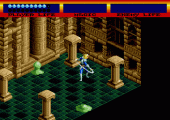
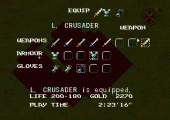
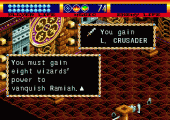
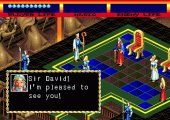
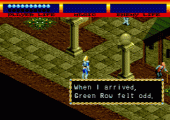
Not a terrible game by any means, but a lot of wasted potential.
This is 99% about dungeon exploration, the story is forgettable. The gameplay is okay but has a few disturbing elements; for example how easily you can push around NPCs and stuff when you touch them. Kind of an early approach to a physics engine. Also, this game offers 8 directions instead of 4 in the other isometric action-adventure, Landstalker. This can actually make jumps more complicated because it requires pixel perfect aiming.
The graphics are pretty detailed, yet too bright and colorful to make a good atmosphere.
Lastly as with most of its competition on Genesis the game is completed in less than 10 hours.
Overall this is worth playing, but only after you played all other action-adventures and action-RPGs on the system.